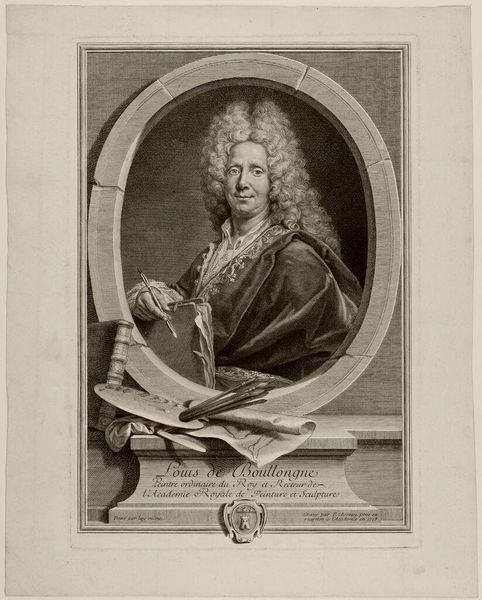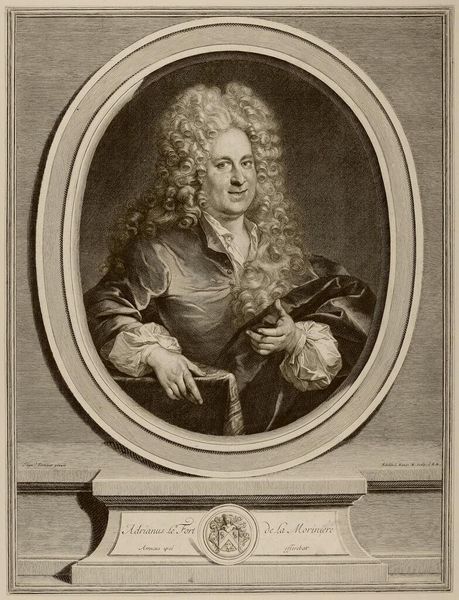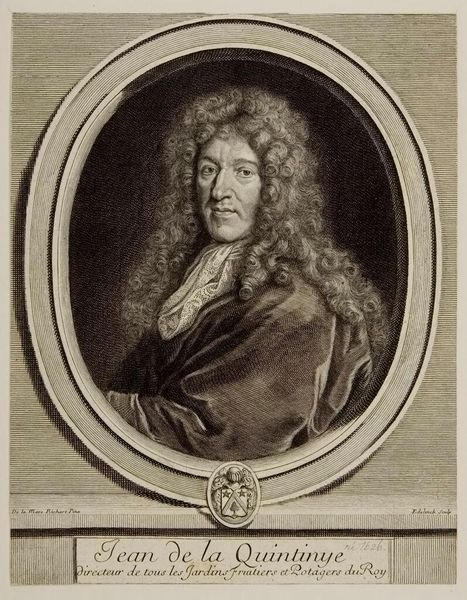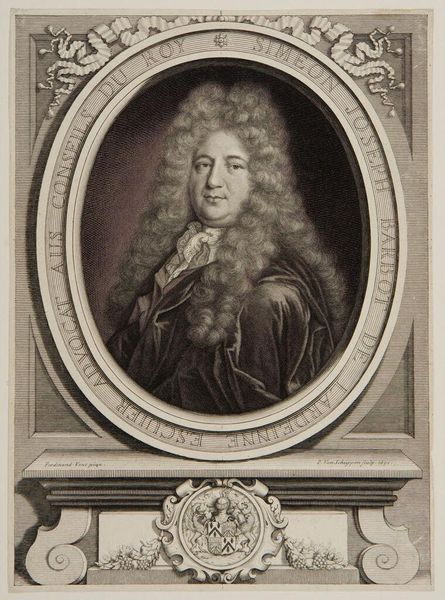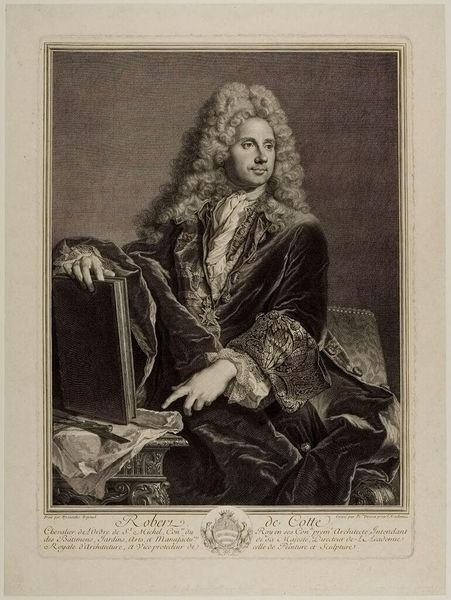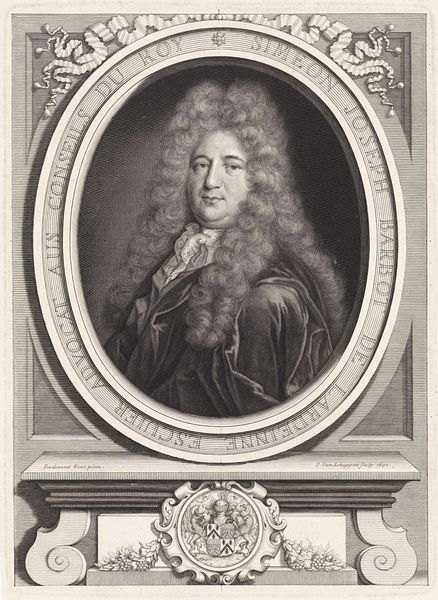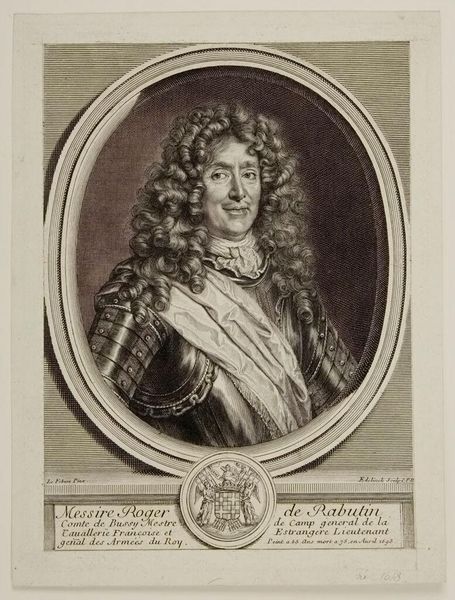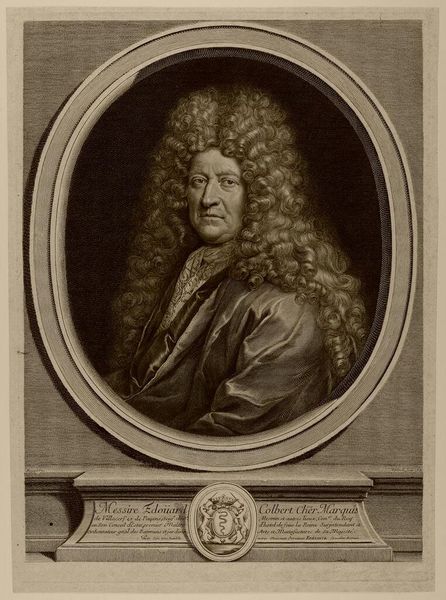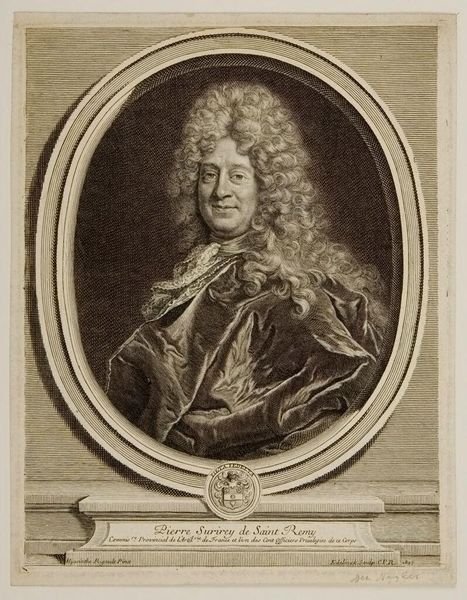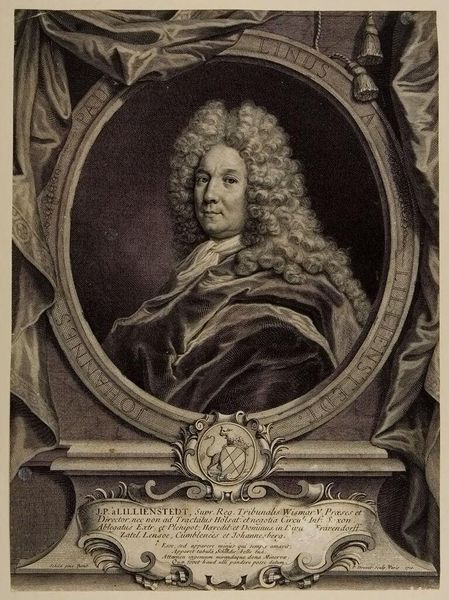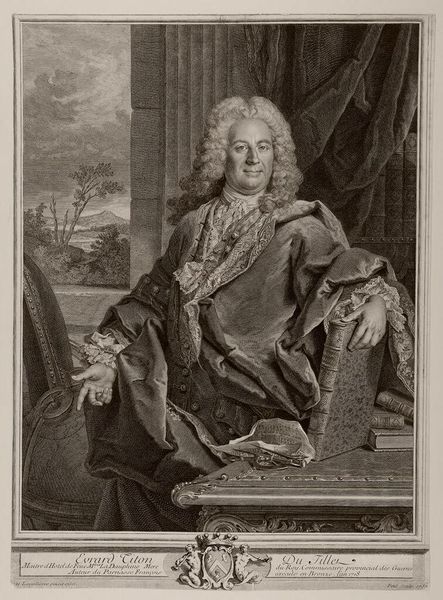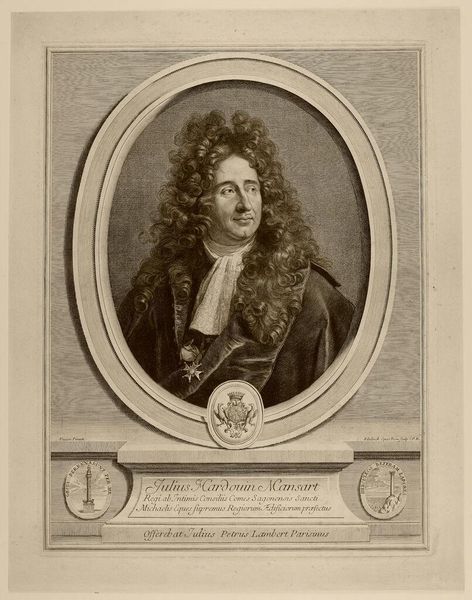
Dimensions: Image: 36.5 Ã 25 cm (14 3/8 Ã 9 13/16 in.) Sheet: 38.2 Ã 26 cm (15 1/16 Ã 10 1/4 in.)
Copyright: CC0 1.0
Editor: Here we have François Chereau the elder's print of Louis de Boullongne. I’m struck by how it frames Boullongne within this oval, almost like he's in a window. What's significant about portraying him this way? Curator: The framing is very deliberate. It speaks to the institutional power Boullongne held as Director of the Académie Royale. These portraits weren't just about likeness; they were about constructing and reinforcing status. Notice how the inscription below his image highlights his titles and affiliations. Editor: So, it's less about the individual and more about his role within the artistic establishment? Curator: Precisely. And consider how prints like this circulated. They served to disseminate an image of authority and reinforce the hierarchy within the art world. Editor: I see. The image itself becomes a tool of power. Curator: Exactly. Thinking about who controlled image-making and distribution gives us insight into the period's social and cultural values. I’ve learned to look at the image itself as an artifact of power. Editor: Thanks! I’ll definitely look more closely at the context surrounding these kinds of portraits now.
Comments
No comments
Be the first to comment and join the conversation on the ultimate creative platform.
